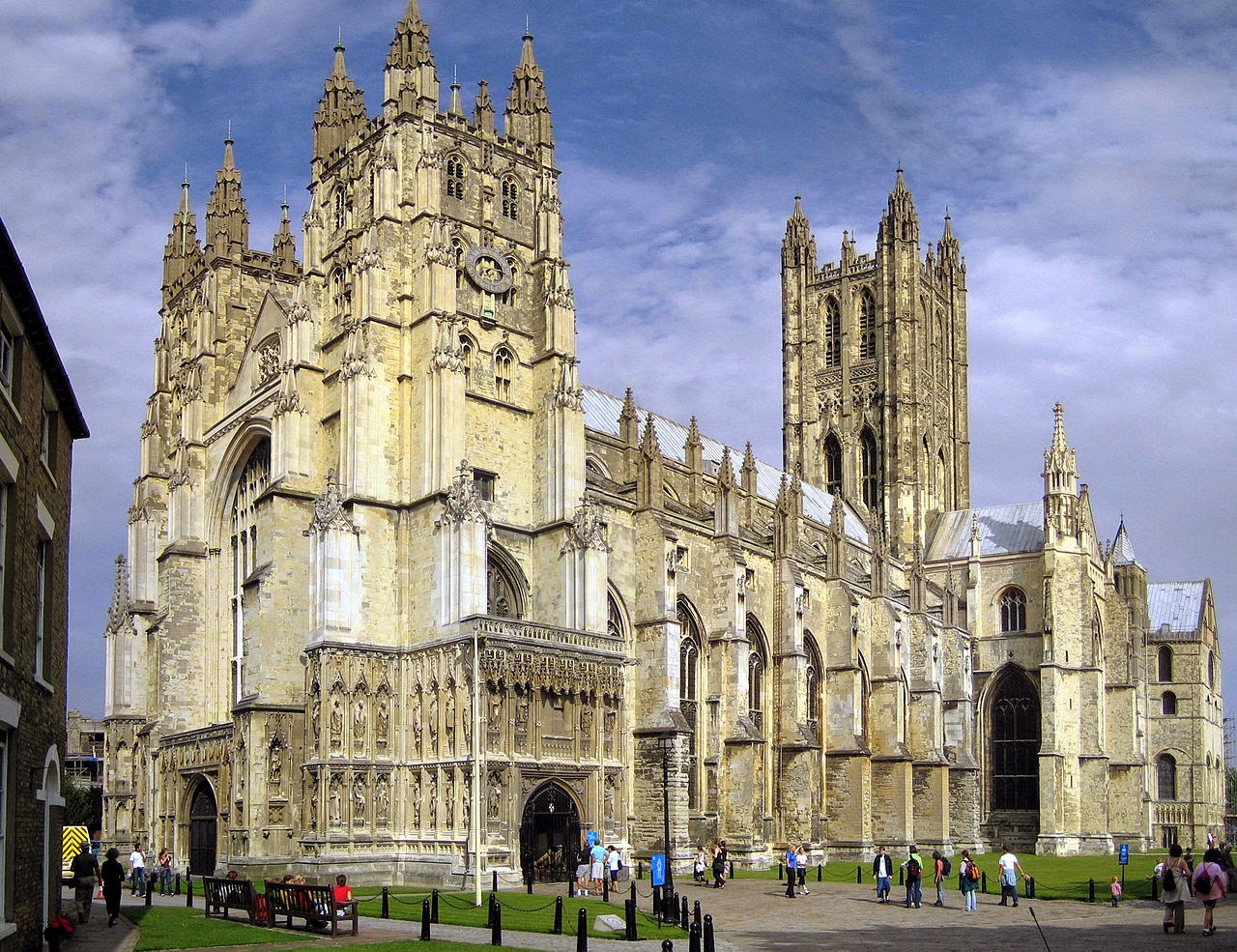 |
| "Canterbury Cathedral - Portal Nave Cross-spire" by Hans Musil. |
What do I mean by this? When I was a Christian, I was on the inside of the Christian cathedral. I admired the beautiful artwork on the walls, the complex network of hallways and sanctuaries. Over hundreds of years, great minds had mapped and decorated the hallways of the Christian cathedral with such works as Dante's Inferno (1317), the ceiling of the Sistine Chapel (1512), and the Catholic Church's "Immaculate Conception" concept (1854).
Of course, there's some artwork in the Christian church that people disagree on: Joseph Smith's Book of Mormon (1830, older than "Immaculate Conception, by the way"), Cargo Cults (1885), Rastafarianism (1930). People identify themselves by which of the many sanctuaries in the Christian Cathedral they worship in, which colors how they see the cathedral itself, almost to the point where it seems like they're in entirely different buildings. Westboro Baptist would never associated with United Church of Christ, and they may not even admit they're in the same cathedral.
When I was on the inside of the Christian cathedral, I only associated with people who worshiped in nearby sanctuaries. I didn't explore the whole cathedral, much less the outside. But in my late teens / early twenties, I learned about cognitive biases as sources of human error. The more I thought about it, the more I thought that all of Christianity might be well explained by these biases: Ambiguity effect, bandwagon effect, confirmation bias, congruence bias, gambler's fallacy, the observer-expectancy effect, the Semmelweis reflex, and subjective validation. There's a lot of ways we trick ourselves into believing things, and the Church seems designed to exploit them through weekly worship and structures which discourage challenging authority (AKA. blasphemy).
When I first started looking for objective reasons to believe my Christian upbringing, I believed it would be there, but I was careful not to leap to the conclusion I know I wanted to find. I unknowingly used the outsider's test: Asking myself if I would accept each piece of evidence if it were presented to me for another religion like Islam or Hindu.
Taking the outsider's perspective was critical for me seeing my own religion for what it is: just one of many attempts by early man to explain the world around him. By taking the outsider's perspective, I began to see the outside of the cathedral. Still mostly looking up at its beauty, but more and more noticing problems with the foundation: "How could an all-powerful, all-knowing, and all-loving god allow evil?" and "How could such a god punish non-believers when their only crime was not seeing the evidence I was having troubles identifying myself?" I decided he couldn't. That the only moral choice was to conclude that god would chose our destiny based on our behavior, not our beliefs. I didn't know it, but in hindsight this conclusion was heresy. And for good reason. It took away my fear of exploring my faith more deeply and more critically.
As I tore away the facade that concealed the foundation of my religion's cathedral, I discovered there was nothing sturdy supporting it. What I once saw as strong stone walls, unmovable and indestructible, I now understood were human constructs with no supporting physical evidence. Unable to support or withstand any modern test of their strength. The walls inside the Christian cathedral can stand ONLY because nobody is allowed to test them.
On the inside, we were taught to look at them but never to test their strength by questioning their validity. Prayer worked. And when it didn't, that was because "we lacked the proper faith" or "God was testing us". The weakness of the cathedral walls was explained away by instilling self-doubt.
We were taught to take the strength of the Christian dogma "On Faith". As if that was a good thing.

No comments :
Post a Comment